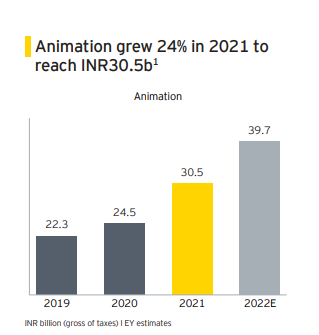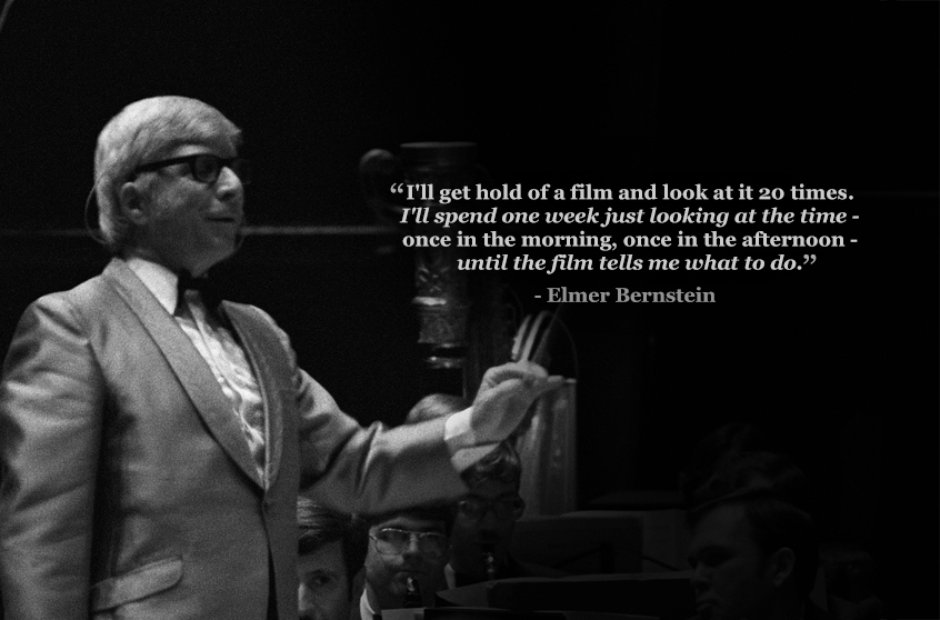The Dynamic Expansion of the Animation Industry
In recent years, the animation industry has experienced unprecedented growth, becoming a formidable force in global entertainment. This boom is not just a transient trend but rather a sustained surge that has been fueled by a confluence of factors, including technological advancements, evolving audience preferences, and the proliferation of platforms. The animation landscape is more diverse and expansive than ever before, spawning a plethora of opportunities for creators and consumers alike.
Technological Advancements: Fueling Creativity
At the heart of the animation industry’s growth is the rapid advancement in technology. The evolution of animation from hand-drawn frames to complex computer-generated imagery (CGI) has been nothing short of revolutionary. With the advent of sophisticated software, animators can now bring their visions to life with unparalleled precision and detail. Tools like Autodesk Maya, Blender, and Adobe Animate have democratized animation production, granting individual artists and small studios the capability to produce work that rivals industry giants.
Virtual Reality (VR) and Augmented Reality (AR) technologies have added new dimensions to storytelling within animation, allowing for immersive and interactive experiences. These technologies are not only expanding the possibilities within the medium but also attracting a new demographic of tech-savvy consumers eager for innovative content. By leveraging technological advances, the animation industry continues to redefine the boundaries of what is creatively possible.
Globalization of Content
The global reach of animation has expanded significantly in recent years, thanks in part to the internet and streaming services that transcend geographical and linguistic barriers. No longer confined to local markets, animated content now reaches audiences worldwide. This globalization is evident in the success of non-Western productions, such as Japanese anime, which has become a cultural phenomenon across continents.
Streaming giants like Netflix, Disney+, and Amazon Prime Video have recognized the universal appeal of animation and have invested heavily in both acquiring and producing animated content. These platforms boast vast libraries that feature everything from classic animations to avant-garde independent works, catering to an increasingly diverse audience. This accessibility has allowed for a cross-pollination of ideas and styles, resulting in a rich tapestry of global animation that reflects varied cultural narratives.
Evolving Audience Demographics
Animation is no longer the exclusive domain of children’s entertainment. Today, animated films and series engage audiences across age groups, addressing themes that resonate with both younger viewers and adults. This shift is partly due to the sophistication and depth of animated content being produced, covering mature themes such as politics, mental health, and existentialism, which were once considered taboo in the realm of animation.
Titles such as "BoJack Horseman," "Rick and Morty," and "Love, Death & Robots" exemplify the broadening scope of animated storytelling, demonstrating that animation can tackle complex narratives with nuance and depth. As animation continues to mature as a storytelling medium, it appeals to a demographic that appreciates layered storytelling and artistic expression.
Job Creation and Economic Impact
The animation industry's growth has also catalyzed economic impacts, particularly in job creation. As the demand for animated content rises, so too does the need for skilled professionals. This demand spans across various roles, from animators and storyboard artists to sound engineers and voice actors. Educational institutions have responded by offering specialized programs in animation and digital arts, aiming to train the next generation of industry talent.
Moreover, the animation industry has a multiplier effect on the economy. Beyond direct employment, it stimulates indirect economic activities, including merchandising, tourism (through themed attractions), and marketing. These activities contribute significantly to the GDP of regions with thriving animation sectors, making animation not only a cultural export but also an economic powerhouse.
The Road Ahead
Looking ahead, the trajectory of the animation industry suggests continued growth and evolution. As technologies advance and audience expectations shift, the industry stands on the cusp of further innovation. The advent of Artificial Intelligence (AI) in animation is a development that holds immense potential, promising to streamline production processes and introduce new creative possibilities.
However, with this growth comes the challenge of maintaining quality and originality in an increasingly saturated market. As studios proliferate and competition intensifies, the emphasis on unique, compelling storytelling will remain paramount. Moreover, the industry must also grapple with issues of diversity and representation, ensuring that the stories being told reflect the world's multifaceted nature.
In essence, the animation industry is not simply experiencing growth; it is undergoing a transformation. As it continues to adapt and expand, it remains an exhilarating domain for both creators and audiences, with the potential to influence cultural conversations on a global scale. As we explore the next phase of this dynamic growth, it becomes clear that animation is not just a genre of entertainment—it is a defining canvas of modern storytelling.
Expanding Beyond the Screen: Animation in Diverse Industries
While the animation industry is predominantly associated with film and television, its influence extends far beyond traditional entertainment. In recent years, animation has become an integral tool across various sectors including education, advertising, healthcare, and even architecture, proving its versatility and expansive applicability.
In the educational sector, animation has revolutionized the way complex concepts are communicated. Animated videos and interactive simulations have become popular instructional tools, especially in subjects like science and mathematics, where abstract ideas can be challenging to convey through conventional methods. Educational platforms are increasingly employing animated content to make learning more engaging and accessible, thereby catering to different learning styles and enhancing students' understanding of intricate topics.
The advertising industry has also harnessed the power of animation to capture audiences' attention and convey messages more effectively. Animated advertisements offer creative flexibility that live-action may not—allowing brands to conceptualize unique visual styles that stand out in a cluttered market. With the ability to incorporate fantastical elements and imaginative scenarios, animation brings a fresh perspective to marketing, engaging consumers in innovative ways.
In healthcare, animation serves as a valuable communication tool, aiding in patient education and medical training. Animated sequences are oftentimes used to explain medical procedures and conditions in a simplified and digestible manner. For instance, intricate surgical procedures can be visualized through animation, helping patients gain a better understanding of what to expect. Similarly, medical professionals benefit from animated training materials that provide a clear and concise visualization of complex anatomical processes.
Architecture and design sectors have also embraced animation to create stunning visualizations of projects before they materialize. Using animation software, architects can develop walkthroughs and flyovers of planned buildings, offering clients and stakeholders a realistic preview of the final outcome. This application of animation not only aids in design planning but also enhances client communication and decision-making processes.
The Role of Festivals and Conventions
Animation festivals and conventions have emerged as crucial platforms for celebrating and promoting innovative works, providing artists with opportunities to network, collaborate, and showcase their talents to international audiences. Events such as the Annecy International Animated Film Festival, Ottawa International Animation Festival, and SIGGRAPH create vibrant spaces for the exchange of ideas while offering insights into emerging trends and technologies in animation.
These festivals serve as incubators for creativity, often highlighting experimental and independent animations that might not attract mainstream attention. For budding animators and seasoned professionals alike, being featured at a prestigious festival can serve as a springboard for wider recognition and commercial success.
Moreover, conventions like Comic-Con and Animation Expo play a key role in connecting industry professionals with fans. They offer a forum for announcing new projects, hosting panel discussions, and engaging with dedicated fanbases, thus fostering a sense of community and shared enthusiasm for the art of animation.
Challenges Facing the Animation Industry
Despite its positive growth trajectory, the animation industry faces several challenges that must be addressed to ensure its sustainable expansion. Foremost among these is the issue of labor rights and fair compensation. As the demand for content increases, so does the pressure on animators and production teams to deliver projects on time and within budget constraints. This has occasionally led to reports of crunch time and overwork within studios, raising ethical concerns about working conditions in the industry.
Additionally, the animation sector grapples with diversity in both representation and creative voices. Although progress has been made, efforts towards inclusivity must be continually reinforced to ensure that animated narratives reflect the vast array of human experiences. This entails not only diversifying on-screen characters but also incorporating diverse voices in decision-making roles within animation studios.
The accessibility of animation as a career requires further attention, particularly in terms of providing opportunities and resources for underrepresented artists and creators. Initiatives aimed at mentorship, scholarships, and outreach can play a significant role in leveling the playing field and enriching the industry with varied perspectives.
Sustainability and Environmental Concerns
As awareness of environmental issues heightens, the animation industry is beginning to explore sustainable practices that reduce its ecological footprint. The digital nature of modern animation has inherent advantages over traditional film production, such as eliminating the need for sets and physical props. However, the energy-intensive requirements of rendering and data storage pose environmental challenges.
Studios are becoming more conscious of their energy consumption and are actively seeking solutions to align with green practices. For instance, some animation companies are transitioning to renewable energy sources to power their operations and exploring energy-efficient technologies. Moreover, cloud-based production and collaboration tools are being used to minimize the carbon footprint associated with travel and physical infrastructure.
As audiences become increasingly environmentally conscious, they are likely to respond positively to studios that prioritize sustainability. Thus, embedding eco-friendly practices within production processes not only contributes to global environmental efforts but can also enhance a studio's reputation and appeal to a growing segment of eco-minded viewers.
The animation industry’s journey is characterized by both vibrant growth and significant challenges. As it continues to innovate and expand its influence across various sectors, the path toward sustainable and equitable practices becomes crucial. With these considerations in mind, the future of animation promises to be as exciting and dynamic as the intricate frames it brings to life.
The Rise of Indie Animation and Crowdfunding
One of the notable trends contributing to the animation industry’s growth is the rise of independent creators and studios, fueled by the advent of digital tools and platforms. Indie animators, once constrained by the resources required to produce high-quality work, are now finding innovative ways to bring their visions to life. This shift is largely supported by crowdfunding platforms such as Kickstarter and Patreon, which have democratized the funding process and allowed creators to connect directly with their audience.
Crowdfunding has proved to be a game-changer, enabling projects that might not fit the commercial mold of major studios to find financial backing. This support empowers creators to explore niche topics, experimental techniques, and personal narratives, ultimately enriching the diversity of content in the animation landscape. Successful campaigns such as "Klaus" and "Bee and PuppyCat" highlight how indie projects can achieve critical and commercial success, underscoring the potential of this model to disrupt traditional production pathways.
The surge of indie animation is further bolstered by social media platforms where creators can build communities and engage fans by sharing behind-the-scenes content and updates. This direct line of communication not only fosters a loyal base of supporters but also provides invaluable feedback that can shape the development process. The accessibility and community-oriented nature of indie and crowdfunded projects are redefining the animation industry, proving that innovation often thrives outside conventional boundaries.
Emerging Markets: The New Frontier
As the global appetite for animation continues to expand, emerging markets present new opportunities and destinations for industry growth. Countries like China, India, and Brazil are witnessing significant investments in animation infrastructure, motivated by both the potential of domestic markets and the global demand for diverse content.
China, already a major player in the arts and entertainment sector, is rapidly cultivating its animation industry through governmental support and investments in animation education and production. With a burgeoning homegrown audience and international partnerships, Chinese studios are contributing to an increasingly competitive market. Productions such as "Ne Zha" and "The Legend of Hei" have achieved both financial success and critical acclaim, illustrating the viability of local content on a global scale.
India's animation industry is also on the rise, driven by a young, tech-savvy population and increased outsourcing from international studios. Indian animators are making a mark with unique storytelling and artistic styles that reflect the country's rich cultural heritage. This growth trajectory is mirrored in Latin America, where countries such as Brazil are nurturing local talent and producing animated works that resonate with both regional and international audiences.
These emerging markets offer more than just economic growth; they bring fresh perspectives and stories that enrich the global animation tapestry. As these regions continue to develop their animation sectors, the industry as a whole stands to benefit from the infusion of new ideas and cultural narratives.
The Future of Animation Technology
As we peer into the future, it is clear that technological innovations will continue to drive the evolution of the animation industry. Artificial Intelligence (AI) is poised to play a transformative role, with applications ranging from automating routine tasks to enhancing creative processes. AI-driven tools can assist animators in generating realistic motion, improving visual effects, and streamlining workflows, thereby expanding creative possibilities while reducing production time.
Moreover, developments in real-time rendering technology are set to revolutionize how animated content is produced and consumed. The ability to render scenes in real-time not only enhances production efficiency but also opens up new avenues for interactive storytelling and virtual environments. This technology is particularly beneficial for video game animation, which requires seamless integration of real-time graphics and player interaction.
Holographic and immersive technologies are also on the horizon, promising to deliver experiences that blur the lines between the virtual and the real. As these tools become more sophisticated and accessible, they have the potential to redefine audience engagement with animated content, offering entirely new dimensions of interaction and exploration.
As these advancements unfold, they will necessitate a reevaluation of traditional roles within the animation industry. Animators will need to adapt, acquiring new skills to leverage emerging technologies effectively. This evolution presents challenges but also abundant opportunities for innovation, pushing the boundaries of how stories are told and experienced.
Conclusion: Animation's Timeless Appeal
In summary, the animation industry is experiencing an era of remarkable growth, driven by technological advancements, global accessibility, and the proliferation of diverse storytelling. While challenges remain, from labor rights to environmental sustainability, the potential for continued innovation and expansion is significant.
The industry's ability to transcend cultural and linguistic barriers, address audiences of varying ages and backgrounds, and explore a wide array of genres underscores animation’s timeless appeal. As it continues to capture the imaginations of audiences around the world, animation not only entertains but also educates, inspires, and challenges societal norms.
Looking to the future, the animation industry promises to be an ever-expanding frontier for creativity and expression. Whether through indie endeavors or major studio productions, the stories told through animation have the power to shape our shared cultural landscape, reflecting and influencing the world in profound ways. As we embrace this vibrant art form, the possibilities for storytelling are limitless, ensuring that animation will remain a dynamic and integral part of the entertainment industry for generations to come.











Comments